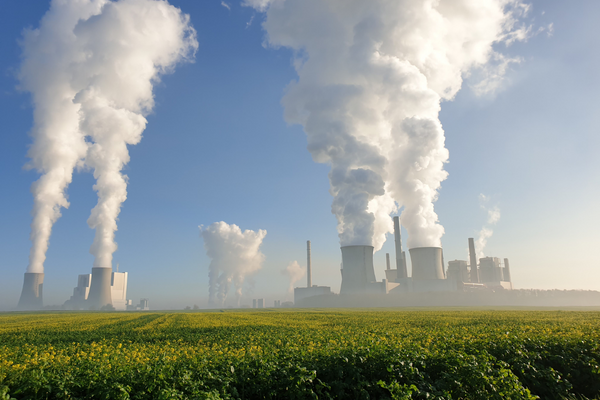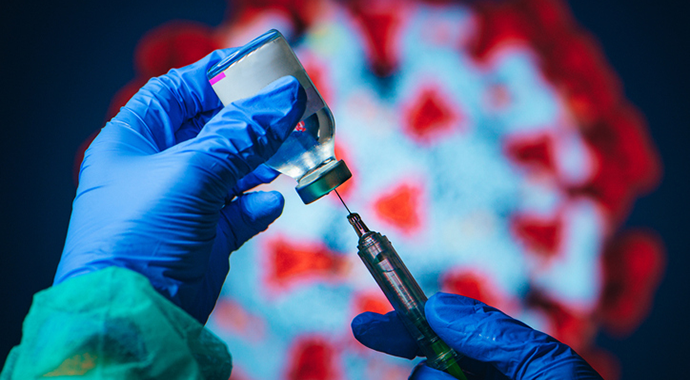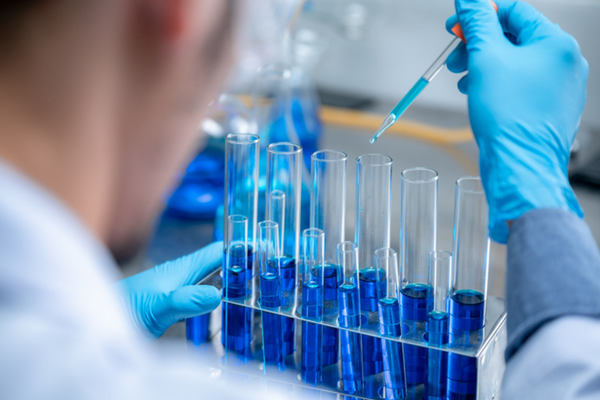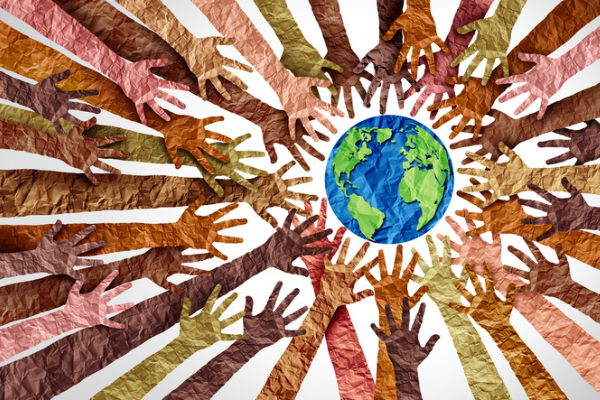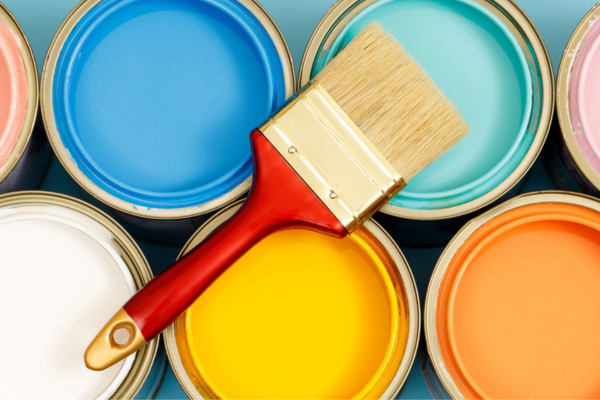
Key Takeaways:
- Tim Knavish shares his thoughts on businesses having to rethink the security of their supply line
- Challenges Knavish confronted as PPG began the process of restarting their labs and factories
- Knavish reflects on how his parents influenced his leadership style
Businesses everywhere are re-thinking the security of their supply lines in light of COVID-19. As a former Global Director, Manufacturer and Supply Chain at PPG, any early thoughts on this topic?
PPG has been in contact with our suppliers throughout the COVID-19 pandemic to ensure supply chain continuity. We are continuously reviewing and adjusting our raw materials, intermediates and finished goods inventory levels to address the longer supply-chain delivery times in order to continue meeting customer demand.
Our global and regional procurement teams are leading efforts with their supply chain staff to identify any risks associated with supply of direct or feedstock materials. As information becomes available, those teams are working directly with customers to communicate contingency plans.
In the April 28 issue of the Wall Street Journal, PPG Chief Executive Michael McGarry was quoted as saying, “Never before have we experienced a crisis as broad as the COVID-19 pandemic.” What are some of the operations that have been most affected by the pandemic?
The Coronavirus pandemic is affecting the coatings industry as a whole and PPG’s global businesses in many ways. Automotive production has stopped in many countries, the aerospace industry has been dramatically impacted, and travel has been dramatically reduced, dampening demand for some of our products.
On the other hand, some areas of the coatings industry have seen an increase in activity. Our packaging coatings business, which supplies coatings for containers for the food and beverage industries, is experiencing solid growth. PPG also supplies coatings products for the medical, consumer electronics, and building supply industries, which are currently in high demand.
Among DIY consumers, PPG is seeing triple-digit percentage increases in digital sales of our consumer paint brands. Our strategic move to provide online resources such as virtual color consultations, free color swatch ordering, and a curbside pick-up and delivery model at our retail stores, is being validated.
In addition, demand for our antimicrobial and biocidal coatings products are growing at a rapid rate, and we continue to actively seek opportunities to donate these products to assist with disease prevention. As a recent example, we donated more than 290 gallons of our Master’s Mark anti-bacterial latex coatings to Shanghai Tong Ren Hospital, which plans to use the paint to renovate its medical laboratory, fever clinic, negative pressure isolation room and centers of disease control.
What are some of the challenges you confronted as PPG thought about how to restart your labs and factories?
First and foremost, our core focus continues to be the health and safety of our employees and their families, our customers and our communities. We make every decision during this global pandemic with this in mind. We then determine how we can safely and effectively serve our customers and protect our business during this uncertain time.
Our facilities continue to operate in compliance with U.S. Department of Homeland Security, Cybersecurity & Infrastructure Security Agency (CISA) regulations, where our business falls under the category of “Critical Manufacturing.” We are honored and proud to partner with our customers to create the products that people count on.
As a manufacturer, much of this essential work cannot be done remotely. At sites where we continue to operate, we employ site-specific health and safety measures such as frequent and thorough cleaning and sanitizing, split-shifts, social-distancing and other tools, which have been used successfully at PPG locations around the world to keep our people safe.
At sites where we are beginning to re-open according to regional guidelines, PPG has developed a thorough COVID-19 response plan to monitor employee health and ensure safe production ramp-up. This also includes the previously mentioned site-specific health and safety measures to ensure the safety of our teams. We will continue to operate our facilities in compliance with the Centers for Disease Control and Prevention (CDC), World Health Organization (WHO) and government regulations.
Understandably, people are focusing on the health aspects of the pandemic. The economic fallout will be significant, to put it mildly. A recession is a foregone conclusion. How long and how deep is PPG imagining it at this point?
Throughout our more than 135 years in operation, PPG has successfully navigated through recessions, the Great Depression, world wars, and other difficult economic times. As a backbone, we have strong technologies, excellent people, and most importantly, we’ve consistently demonstrated agility and nimbleness to manage through uncertain situations.
That being said, we are not immune to what is happening to the global economy. The Coronavirus is causing significant challenges to every region and nearly every end-market and customer, and we will continue to monitor those changes and adjust to challenges in the current environment as needed. PPG has come out of prior recessions and downturns in stronger financial condition and attained record sales and earnings after other crises. This would be our expectation with this crisis as well.
What are some “positives” that will emerge from this COVID-19 experience? Both for you personally, and for PPG as a whole?
Personally, this has been an opportunity for me to spend more time at home with my wife and two daughters. As someone who has managed global businesses throughout PPG and had endless opportunity to travel the world and live abroad, I’ve spent most of my lifetime on the road meeting with customers and our global teams, which has been incredibly rewarding. But recent stay-at-home orders have brought me home and provided an opportunity to really cherish time with my family.
From a business perspective, it has been incredible to see our teams come together, break down silos and take care of our customers and each other. A great example: When stay-at-home orders were implemented across the country, our color consulting team found new ways to advise customers on the best colors for their home, for free, through our new virtual color consultation program. It was a natural solution for families who had a bit more time to DIY. Through text, email or FaceTime, our team of experts have been virtually consulting with families looking to revamp their offices, children’s rooms, and other areas, all from the comfort of their own home. Customers are then able to order free online swatches, and purchase paint through no-contact delivery or curbside pickup at a PPG Paints store or through thehomedepot.com.
I’m #PPGproud of our company’s proactive approach to support employees and communities during this time of need. The collaboration amongst our teams has been truly admirable, and I’m proud of our colleagues around the world who are stepping up during this difficult time, particularly those who continue to safely serve on the frontlines in our manufacturing facilities and stores. I always say that they’re carrying the PPG flag in these uncertain times, and for that, we’re incredibly thankful.
How did your parents influence your leadership style?
I grew up in a blue-collar family environment here in Pittsburgh. My parents were humble, hard-working, compassionate people with a very strong set of values. I try my best to live and demonstrate their core values in both my personal life and my work life.
What are some of the challenges in leading global teams? How do you overcome these challenges?
Being part of a company that is as large as PPG – with more than 150 manufacturing locations and operations in more than 70 countries around the world – we’re continuously looking at ways to leverage our scale. I encourage our teams to use the PPG breadth and depth of knowledge to our advantage, and act in what we call a “One PPG” manner. Chances are, there is someone within the organization that has encountered the same challenge that someone else is experiencing, so I always encourage employees to reach out, expand their network, and continue to collaborate across the globe.
What major technology trends are you following with an eye toward how they may impact PPG’s future business opportunities?
Now more than ever, digitization will continue to be a core focus of the paint and coatings industry, and PPG is developing tools and resources to ensure a seamless buying process for customers. For example, the PPG Paint brand’s website offers a room visualizer for customers to quickly and easily see colors in their own space, in addition to online inspiration resources, access to the latest color trends, store locators, paint estimators and more. By offering these free digital resources, we’re making the inspiration and purchase process even easier and more integrated.
It is imperative for the coatings industry to offer future-forward digital tools and resources to enhance the customer experience. Unlike consumers of the past, today’s customers thrive on convenience and look to digital resources to complement the traditional retail experience. They utilize online platforms to browse color, compare products, find their local retailer and ultimately, make a purchase. Some even use digital platforms to purchase paint or arrange the painting services. We know that the digital world is evolving at a rapid pace, and there is a huge opportunity for PPG to be on the forefront of this shift.
Among your scientists at PPG, what non-technical skills do you most highly value?
There are a few core strategies that I’m passionate about to drive a successful, engaged and diverse team. I believe in working hard to implement positivity, embracing change, maintaining high energy, trusting your people, and celebrating successes within our global teams.
One thing that I continue to impress upon individuals and teams within our organization is to be bold earlier, and don’t be afraid to take chances. It’s my advice to all PPG employees, regardless of where they are in their careers. Looking back, I wish my younger self received this advice.
I’m also a big believer in drawing motivation from the people around me and encouraging others to do the same. I like to win as a team, not as an individual – winning is cool when it’s collaborative. Finally, I’m a big believer in hiring the right talent for the right roles, and trusting them to lead with their expertise. I much prefer to lead alongside our talented people.
What do you view as PPG’s most consequential sustainability issue? And what is your organization doing to address it?
Sustainability remains an important part of PPG’s long-term success as we continue our mission of “protecting and beautifying the world.” Last year, we achieved 33% of sales from sustainably-advantaged products, 25% reduction in waste disposal intensity from the 2017 baseline, and 33% of our manufacturing and R&D sites with zero landfilled process waste.
While we’ve made continued progress toward our 2025 sustainability goals, we know that our work doesn’t stop there. Our culture of continuous improvement underpins our sustainability promise. As we look ahead, we have to be vigilant in keeping up with regulations globally and the evolving needs of our customers. To see our latest progress, visit sustainability.ppg.com.
What can the chemical industry do to make the workplace more welcoming and rewarding for women and minorities?
This is incredibly important to me. By developing a diverse group of talent, we’re able to meet the needs of our diverse global business and customers. This has been proven throughout the years from studies by McKinsey, which show that diverse teams outperform non-diverse peer groups in terms of profitability.
I want to ensure that everyone feels empowered to pursue a career in the science, technology, engineering and math fields – no matter their background. To fill the skills gap, we need to empower women and minorities to explore the various career options through STEM fields. As part of this, companies like PPG must help students develop interest early. PPG does this through partnership with a number of organizations and local events, including Junior Achievement, National Manufacturing Day, the National Society of Black Engineers and more.
We also offer a robust internship program that we like to call “PPG Primers.” Each year, we give students from top-tier U.S. universities the opportunity to build professional skills and engage with our businesses’ top leaders during this program.
As a component of this development program, we offer participants an internship or co-op track that involves rotations within our various businesses. Each rotation lasts between 10 and 16 weeks and is part of one of six tracks – manufacturing; environment, health and safety; research and development; supply chain; finance; and information technology. Participation in the program can lead to a full-time position within PPG.
Most Pittsburgh natives I know are pretty passionate about Pittsburgh sports teams. If we could set you up with season tickets for one of them, which one would you like?
I do in fact love Pittsburgh sports…including seeing the Penguins play at PPG Paints Arena! But, if I had to pick only one Pittsburgh team to support, it would have to be the Steelers. In my hometown, the Steelers are like a religion. That said, I also enjoy the Penguins and Pitt Panthers.

Tim Knavish is the Executive Vice President of PPG, responsible for the architectural coatings business in the U.S. and Canada (USCA); Europe, Middle East and Africa (EMEA) and Asia Pacific regions, the global automotive refinish business, the Latin America region and the digital and information technology functions. He was appointed to this position in October 2019.
Knavish joined PPG in flat glass engineering in 1987, based at the corporate headquarters in Pittsburgh. He then advanced through roles including Process Engineer, Supervisor of Technical Services, Manager of Operations Planning and Scheduling, and Superintendent of Production in PPG’s flat glass and former automotive glass businesses before joining the architectural coatings business in 2000, as Plant Manager for the East Point, Georgia, manufacturing facility.
In 2002, Knavish returned to Pittsburgh as Director, Supply Chain, for the former automotive replacement glass business, and in 2004, he became Global Director, Manufacturing and Supply Chain, for the automotive refinish coatings business. He moved to Australia in 2005 as Managing Director, Australia and New Zealand coatings, and General Manager, Automotive Refinish. In 2007, Knavish assumed responsibility in Troy, Michigan, as General Manager, Automotive Coatings, Americas, and in early 2010, he was named a Vice President with the same scope of responsibility. He relocated to Pittsburgh in 2012 as Global Vice President, Protective and Marine Coatings, and he returned to Troy in March 2016 as Senior Vice President, Automotive Coatings. Knavish returned to Pittsburgh in October 2017 as Senior Vice President, Industrial Coatings. In addition to global leadership of PPG’s industrial coatings, packaging coatings and coatings services businesses, Knavish was responsible for the Global Supply Management function and for PPG’s Asia Pacific region. In January 2019, he was appointed Senior Vice President, Architectural Coatings and President, PPG EMEA.
A native of Pittsburgh, Tim earned both a bachelor’s degree in mechanical engineering and an MBA from the University of Pittsburgh.
The opinions expressed in this article are the author's own and do not necessarily reflect the view of their employer or the American Chemical Society.
Copyright 2022 American Chemical Society (All Rights Reserved)

